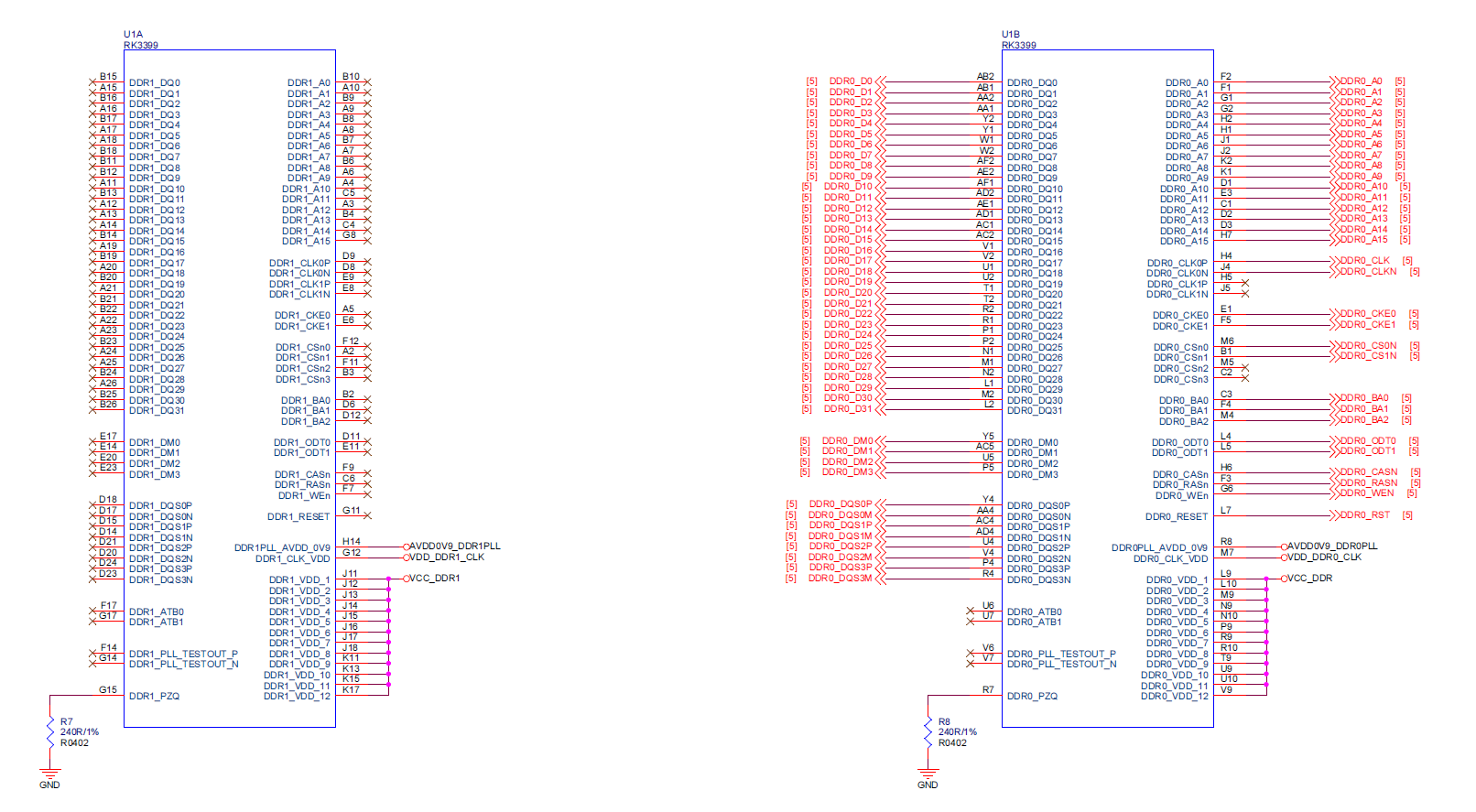Currently following an schematic for NanoPI NEO4 to make my own RK3399 board. On their schematic for the K4B4G1646D-BCK0,I noticed for pins DQ1-DQ15 on both chips connect to a randomised list of connectors from DDR0_D1 to DDR0_D31 and I was wondering why is that?
And also why are the numbers on the connectors different to the lines that they're connecting to, for example DQ7 I would expect it to connect to DDR0_D7 but instead it connects to DDR0_D3.
Second question in relation to the LDQS(F3)/LDQSN(G3) & UDQS(C7)/UDQSN(B7) connectors I plan to change out the ram chips for a different chip which is more widely available to purchase (AS24C256M16D3LB-BIN); however I've noticed that the LDQS/LDQSN & UDQS/UDQSN pins are completely missing from the datasheet and instead have been replaced with DQSL (F3/G3) & DQSU (C7/B7). So I was wondering how do I exactly go about connecting these up to the previously available connectors on the RK3399?
Finally I noticed on the manifesto for the Nanopi Neo4 that its meant to use 1GB of DDR3 Ram but in the schematic these K4B4G1646D-BCK0 are actually 4GB each so I was curious as to whether the wiring they have in their schematic for the DDR Controller on the RK3399 & DDR3 schematic properly utilises the 2 4GB DDR3 ram and allows the RK3399 to have the 8GB DDR3 ram readily available?
If anyone able to help answer and/or point in the direction of an answer, would be greatly appreciated.
**Neo4 Spec List*
 Samsung Webpage for the K4B4G164D-BCK0 can be access via the link below:
https://www.samsung.com/semiconductor/dram/ddr3/K4B4G1646D-BCK0/
Samsung Webpage for the K4B4G164D-BCK0 can be access via the link below:
https://www.samsung.com/semiconductor/dram/ddr3/K4B4G1646D-BCK0/
Edit: I was doing some digging about in the schematic and I noticed that the DQLS & DQSU on the AS24C256M16D3LB-BIN is essentially the LDQS & UDQS but the letters have been placed in a different order, so I would assume those are the pins I would be connecting. And as there is no connector with an 'N' on the end I would also assume I would simply be connecting up to DDR0_DQS0P-DQS3P and just ignoring the DDR0_DQ0M-DQ3M connectors on the RK3399?
2nd Edit: AS4C256M16D3LB-12BIN Datasheet: https://www.mouser.co.uk/datasheet/2/12/Alliance_Memory_4Gb_256M16_AS4C256M16D3LB_Bdie-Rev-1288929.pdf



